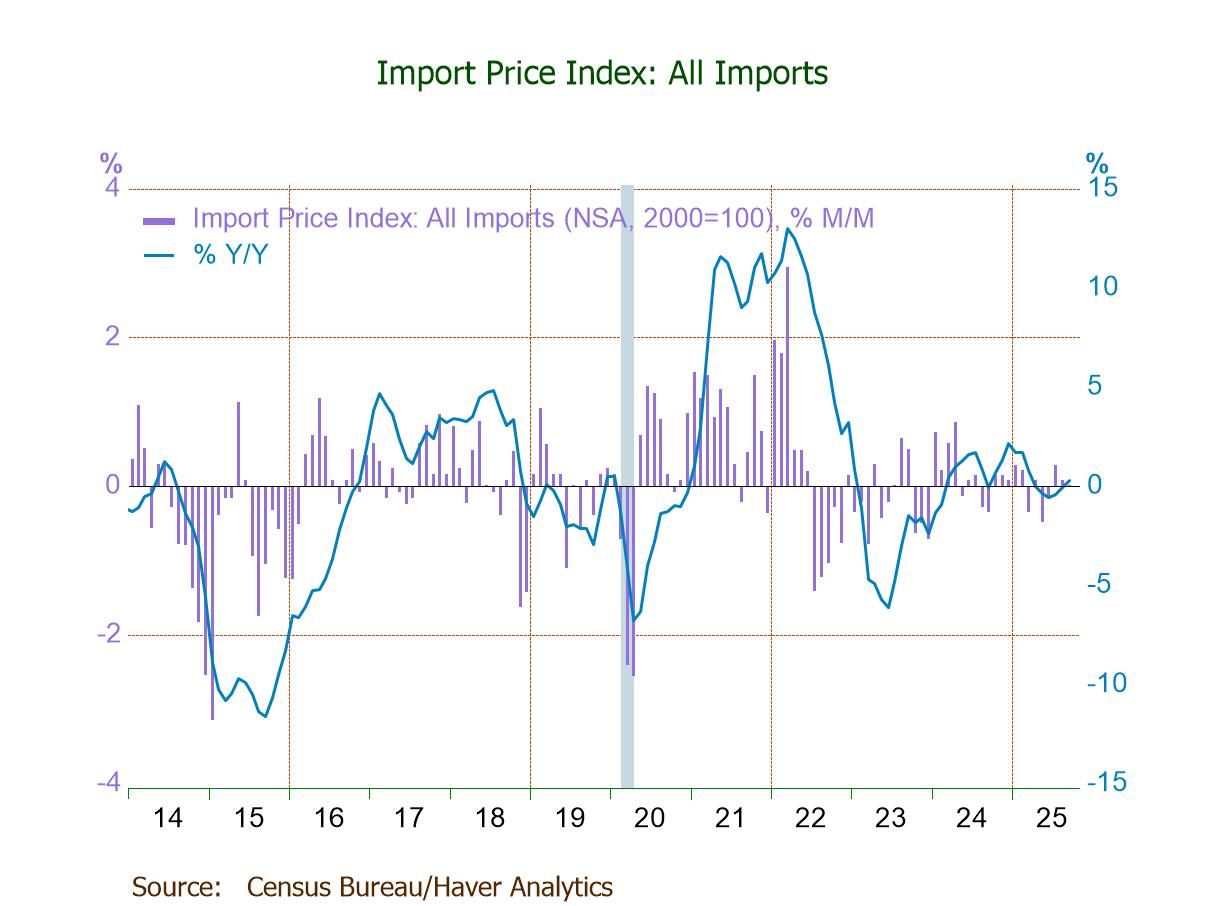U.S. Initial Unemployment Insurance Claims Decline Unexpectedly
by:Tom Moeller
|in:Economy in Brief
Summary
- Initial claims fall to lowest since September 6, 1969.
- Continuing claims in regular programs rise.
- Insured jobless rate increases.


Initial claims for unemployment insurance declined 43,000 to 184,000 during the week ended December 4 (-78.4% y/y) from 227,000 in the prior week, revised from 222,000 reported initially. The Action Economics Forecast Survey expected 230,000 claims for the latest week. The 4-week moving average fell to 218,750 in the week ended December 4 from 240,000 the week prior.
Initial claims for the federal Pandemic Unemployment Assistance (PUA) program in the week ended December 4 rose to 1,826 (-99.6% y/y) from 1,407 in the prior week. This program expired on September 4. These claims averaged 107,756 per week during August, the last full month of the program. The PUA program provided benefits to individuals who are not eligible for regular state unemployment insurance benefits, such as the self-employed. Given the brief history of this program, these and other COVID-related series are not seasonally adjusted.
Continued weeks claims for regular state unemployment insurance rose to 1.992 million (-65.8% y/y) during the week ended November 27 from 1.954 million in the prior week, revised from 1.956 million. The insured unemployment rate edged higher to 1.5%, from 1.4%.
In the week ended November 20, continued weeks claimed in the Pandemic Assistance Program (PUA) program fell to 124,536 (-98.6% y/y) from 170,300 in the week prior. The number of continued weeks claimed compares to 4.896 million in the last week of the program, September 4. Continued weeks claimed for Pandemic Emergency Unemployment Compensation (PEUC) declined to 112,728 in the week ended November 20, down from 146,449 in the prior week and below the 3,644,555 claims during the last week of the program on September 4. This program covered people who had exhausted their state unemployment insurance benefits.
In the week ended November 20 the total number of all state, federal, PUA and PEUC continued claims was 1.948 million, down from 2.298 million the prior week. These figures are not seasonally adjusted.
The state insured rates of unemployment in regular programs continue to vary. In the week ending November 20, the highest insured unemployment rates were Alaska (2.9%), Illinois (2.3%), New Jersey (2.3%) and California (2.1%). The lowest rates were Nebraska (0.3%), South Dakota (0.2%) and Alabama (0.3%). Other state insured rates of unemployment in regular programs included Pennsylvania (1.5%), New York (1.7%), Texas (0.9%), and Florida (0.5%). These state rates are not seasonally adjusted.
Data on weekly unemployment claims going back to 1967 are contained in Haver's WEEKLY database, and they are summarized monthly in USECON. Data for individual states are in REGIONW. The expectations figure is from the Action Economics Forecast Survey and is in the AS1REPNA database.


Tom Moeller
AuthorMore in Author Profile »Prior to joining Haver Analytics in 2000, Mr. Moeller worked as the Economist at Chancellor Capital Management from 1985 to 1999. There, he developed comprehensive economic forecasts and interpreted economic data for equity and fixed income portfolio managers. Also at Chancellor, Mr. Moeller worked as an equity analyst and was responsible for researching and rating companies in the economically sensitive automobile and housing industries for investment in Chancellor’s equity portfolio. Prior to joining Chancellor, Mr. Moeller was an Economist at Citibank from 1979 to 1984. He also analyzed pricing behavior in the metals industry for the Council on Wage and Price Stability in Washington, D.C. In 1999, Mr. Moeller received the award for most accurate forecast from the Forecasters' Club of New York. From 1990 to 1992 he was President of the New York Association for Business Economists. Mr. Moeller earned an M.B.A. in Finance from Fordham University, where he graduated in 1987. He holds a Bachelor of Arts in Economics from George Washington University.






